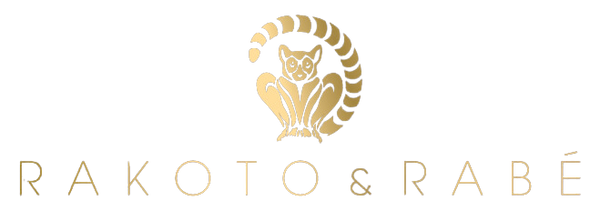RAKOTO & RABÉ
About us
.

.
.
Background story about madagascar.
.
MADAGASCAR : Madagascar is located off the eastern coast of southern Africa in the Indian Ocean along the Mozambique Channel. It is the fourth largest island in the world with a landmass of 226,498 square miles (586,889 square kilometers) including its offshore islands. It is one thousand miles long (1,609 kilometers).
.
RICE : The Betsileo are probably the most efficient traditional rice farmers. They construct rice paddies on narrow terraces ascending the sides of steep valleys in the southern portion of the central highlands, creating an intricate landscape reminiscent of Indonesia or the Philippines. The irrigation systems use all available water, which flows through narrow canals for considerable distances. Some rice paddies cover no more than a few square meters. Only those surfaces that cannot be irrigated are planted in dryland crops.
.

No.2 Photo : ”Zebu in Madagascar” by Alex Dunkel is licensed under the Creative Commons Attribution-Share Alike 3.0 Unported/Desaturated from original.
.
PEOPLE : The first people to settle there were from Borneo, and the current people are primarily a mixture of Malaysian, Indonesian, Arab, African, Indian, and European ancestry. Between these groups of people, and others who have inhabited the island over the years, Madagascar has become an incredible melting pot of cultures.
ZEBU : The traditional livestock-raising peoples are the Bara, Sakalava, and other groups of the south and the west, where almost every family owns some zebu cattle.
.
.
WHO IS RAKOTO & RABÉ ?
.
For many years we have been travelling, visiting our roots in Madagascar. There we have started to collect beautiful local crafts that have inspired us to set our own brand in 2013. With our unique product design and beautiful leather and horn creations, we at RAKOTO & RABÉ ACCESSOIRES try to preserve the original Malagasy heritage enriched with contemporary taste.
.
Since 2013 RAKOTO & RABÉ ACCESSOIRES continuously develop unique high quality design products crafted by hand and made of natural materials. Our stunning range of horn products is reflecting the identity of original Malagasy with precious.
.

.
CULTURE : Rice fields are a common sight in Madagascar’s landscape. Where there is water, people grow rice. Many valley floors have rice paddies, often built in terraces. The zebu is important for agriculture. You can see them everywhere throughout the country, about 19 millions live on the red soil of the island. In Madagascar, zebus symbolize power, strength and particularly prosperity. Now the zebu is used in every way as worship, source of food and of course by using the warm coloured beautiful horn in our design object.
.
LOVE : Our products are crafted by small factories in villages of diverse countries (Madagascar, Germany and Thailand). Our cooperation is based on fairness, kindness, responsibility, sharing and love.
.

No.3 Photo : ”Zebu horn handling” by HoneyGaLe is licensed under the Creative Commons Attribution-Share Alike 3.0 Unported/Desaturated from original.
No.4 Photo : “Zebu horns ready to be handled” by HoneyGaLe is licensed under the Creative Commons Attribution-Share Alike 3.0 Unported/Desaturated from original.
.
TRAVELLING : Since we met in Thailand we have visited some of the most beautiful places in the world. We have indulged ourselves in luxury by exploring local heritage and customs. We are lucky to have seen and experienced so much during our journeys so that we have started to create our products with the support of those local suppliers and craftsmen who share with us the passion for high quality tableware products and accessories.
.
.
Founders,
1. O. Aimé Leder Rakotomalala
2. Lalaina Toni Rabétokotany
3. Varit Chamnankit
.
.
.
Informations : *foodfreeway(April 2nd, 2011), Madagascar, www.wanderlustandlipstick.com.
*Madagascar’s secret emblem, The Zebu, www.madamagazine.com.

